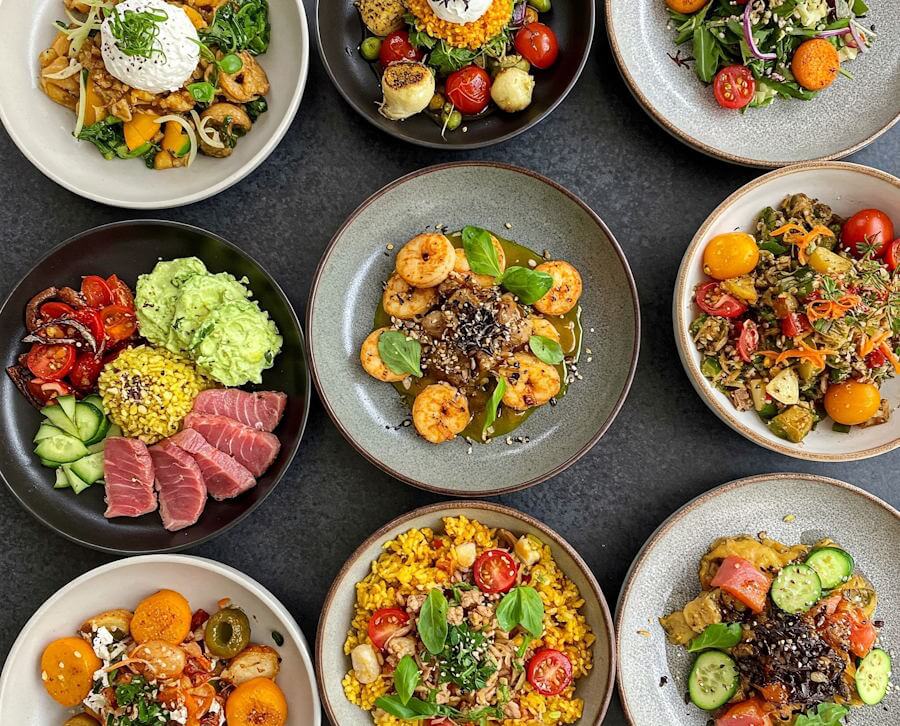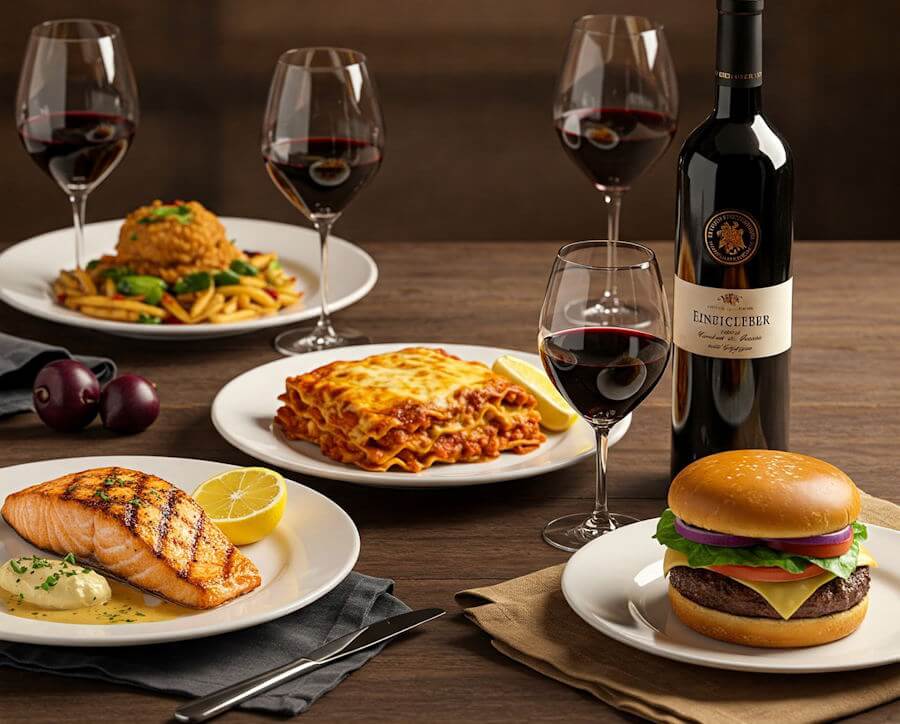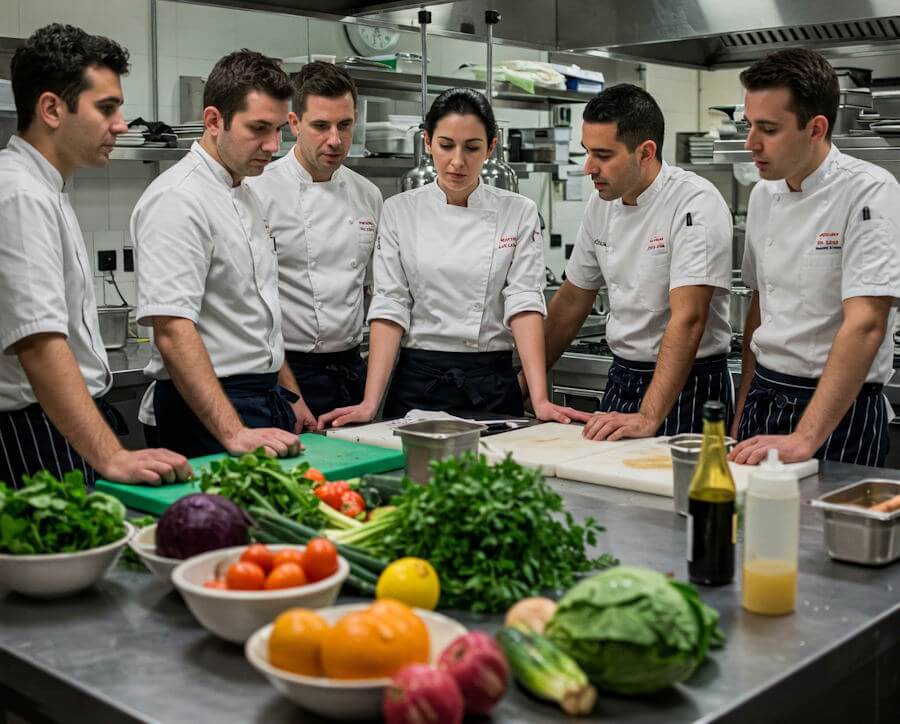In recent years, the concept of Instagram-worthy dishes has emerged as a significant trend within the culinary world. As social media platforms, particularly Instagram, continue to shape dining experiences, the aesthetics of food presentation have taken center stage. Restaurants and food creators now recognize that visually appealing dishes can significantly enhance the overall dining experience and even influence the popularity of their offerings.
The importance of aesthetics in food presentation cannot be overstated. A well-composed plate not only garners immediate attention but also elevates the perceived value of the meal. Colors, textures, and plating techniques come together to create dishes that are not only delicious but also tantalizing to the eye. This attention to detail plays a crucial role in fostering engagement on social media platforms, where sharing visually enticing food photographs has become a cultural norm.
A dish that looks stunning is more likely to be photographed and shared, leading to increased visibility for restaurants and their menus. For diners, capturing their meal on camera has become a form of self-expression and a way to share their culinary adventures with friends and followers. This trend goes beyond merely posting images; it reflects a deeper appreciation for the artistry involved in food preparation and enjoyment.
Moreover, the rise of influencer culture has amplified the need for establishments to present Instagram-worthy dishes. Diners are increasingly drawn to establishments that prioritize not just taste but also the visual appeal of their offerings. As a result, food photography has become an integral aspect of modern gastronomy, transforming the way consumers choose their dining experiences.
The Art of Food Presentation
Food presentation is an essential aspect of culinary arts that significantly impacts the visual appeal of a dish. A well-presented meal can enhance the dining experience and also ensure that it stands out on platforms like Instagram, where aesthetics play a critical role. Several principles govern food presentation, beginning with color balance. Vibrant, contrasting colors can attract attention and evoke emotion, making dishes more appealing to the viewer. Utilizing various ingredients of different colors can create a feast for the eyes, setting the stage for a memorable meal.
Another vital element to consider is plate composition. The way food is arranged on a plate can dramatically influence how it is perceived. Chefs often adhere to the “rule of thirds,” dividing the plate into sections to create a balanced look. This technique allows some negative space, preventing the plate from appearing overcrowded. Utilizing height and layering can also draw the eye upward, offering an inviting perspective that encourages diners to engage with the dish. For instance, stacking ingredients or using a ring mold can create an elevated focal point.
Garnish plays a crucial role in enhancing food presentation. Thoughtfully chosen garnishes, whether they are fresh herbs, edible flowers, or microgreens, can add not only visual interest but also additional flavor dimensions. When selecting garnishes, it is important to ensure that they complement the dish rather than overpower it. Minimalism is often key; using just a few carefully placed elements can elevate a dish without overwhelming it. For plating and styling, it’s beneficial to use tools such as squeeze bottles for sauces or tweezers for precise placement of delicate elements. By applying these techniques, the art of food presentation can transform ordinary dishes into Instagram-worthy creations that capture the attention and appreciation of a digital audience.
Top Instagram-Worthy Dishes to Try
In the realm of visual storytelling, food has emerged as a cornerstone of engagement on platforms like Instagram. Here is a curated list of the top dishes that not only tantalize taste buds but also create a visual feast, making them particularly popular among food enthusiasts.
First on our list is the vibrant Acai Bowl. This dish combines frozen acai berries blended to a smooth texture, typically topped with an array of fresh fruits such as bananas, strawberries, and blueberries. A sprinkle of granola and a drizzle of honey add texture and sweetness. Its striking colors make it a favorite for capture on Instagram, inviting viewers to indulge in a healthy yet visually captivating meal.
Next up, the Rainbow Sushi Roll offers a delightful fusion of flavors and colors. Crafted with fresh seafood and colorful vegetables, these sushi rolls feature a variety of ingredients, including avocado, tuna, and carrots, all artfully arranged to create a stunning visual effect. The presentation, often enhanced with sauces or garnishes, creates a dish that is not only delicious but also incredibly photogenic, making it a standout on any Instagram feed.
Another notable mention is the Charcoal Ice Cream. This avant-garde dessert has gained popularity for its striking black color, achieved through activated charcoal. Its creamy texture is enhanced with unique flavors such as coconut or matcha. The dramatic hue and exceptional taste have made it a must-try for those seeking to share eye-catching desserts on social media.
Moreover, the Poke Bowl represents a harmonious blend of textures and flavors while offering a colorful presentation that is perfect for Instagram. With a base of rice topped with an assortment of fresh fish, vegetables, and unique sauces, each poke bowl can appear different based on the ingredients chosen. The endless possibilities for customization contribute to its Instagram-worthiness.
These dishes exemplify that food is not only about nutrition but also about aesthetics. By trying these Instagram-worthy creations, not only can you savor their flavors, but you can also elevate your social media presence with visually pleasing content.
Food Styling Tips for the Perfect Shot
Capturing the essence of a meal in an Instagram-worthy photograph involves a careful blend of technique and artistry. To start, lighting plays a crucial role in food photography. Natural light is often the best choice, as it highlights the vibrant colors and textures of your dish. Aim to photograph your food near a window during the day when sunlight is soft and diffuse. Avoid harsh overhead lights, as they can create unflattering shadows and wash out colors. If shooting indoors or in low light conditions, consider using reflectors or diffusers to soften and spread the light evenly.
Next, the angle from which you take your photo can greatly impact the presentation of the food. While a flat lay shot can showcase a beautifully arranged spread, side angles often highlight the height and layers of certain dishes, such as burgers or cakes. Experimenting with various perspectives can result in more dynamic and engaging images. Moreover, incorporating props such as utensils, napkins, or natural elements can add depth to your shots and create a more inviting atmosphere.
Background selection is another important aspect of food styling. A clean, uncluttered background allows the dish to take center stage while enhancing its visual appeal. Opt for neutral or complementary colors that do not distract from the main subject. Textured surfaces, such as wooden tables or marble countertops, can prove to be effective backdrops as they introduce interest without overwhelming the food itself. Always consider the overall composition to ensure a harmonious balance.
By integrating these tips into your food photography practices, you can effectively showcase your culinary creations, making them more appealing for your audience. Practice and experimentation are key to mastering food styling, so don’t hesitate to try different techniques to discover what works best for you.
The Influence of Color in Food Photography
Color plays a significant role in food photography, serving not only to attract the viewer’s eye but also to evoke emotions and convey messages about the dish itself. The psychology of color reveals that different hues can influence our senses and perceptions, creating an instant connection between the viewer and the food. Vibrant colors, such as the rich reds of ripe tomatoes or the lush greens of fresh herbs, can stimulate appetite and enhance the overall appeal of a dish.
In many cultures, the presentation of food is deeply intertwined with the perception of its taste. For example, dishes that combine complementary colors, such as the warm yellows of roasted squash alongside the deep purples of eggplant, often appear more appetizing. These visually striking combinations can encourage social media users to capture and share their culinary experiences, making the dishes not only more Instagram-worthy but also fostering a sense of community around the culinary arts.
Additionally, contrasting colors can be an effective strategy in food styling. Utilizing contrasting tones helps the dish stand out against its background, drawing attention to its most appealing features. For instance, plating a bright orange curry on a white plate can create a striking visual effect that enhances the color’s vibrancy. Furthermore, garnishes such as microgreens or edible flowers can add an unexpected pop of color, providing depth and texture to the composition.
To enhance the color palette of your meals for appealing food photography, consider incorporating seasonal vegetables and fruits known for their vivid colors. Vegetable medleys, colorful salads, and fruit arrangements can transform a simple dish into a visual feast. With thoughtful color choices, food can transcend mere sustenance, becoming an artwork that tells a story through its presentation.
Dining Experiences That Enhance Aesthetics
When considering a dining experience that is not only delightful to the palate but also pleasing to the eye, the ambiance of the restaurant plays an integral role. The environment in which one enjoys their meal can significantly enhance the overall aesthetic appeal. Factors such as lighting, décor, and music all contribute to setting the mood, creating a backdrop that complements the visual presentation of the dishes served. Restaurants that prioritize aesthetics often use natural lighting or well-placed spotlights to highlight their culinary masterpieces, transforming each dish into a work of art, worthy of capturing for social media.
The table settings are another crucial aspect to consider. A well-set table, complete with elegant cutlery, thoughtfully arranged plates, and attractive napkins, can elevate the dining experience. From colorful tablecloths to stylish glassware, these elements not only serve practical purposes but also enhance the visual appeal, making every meal feel more special. For those who appreciate the interactions that accompany dining, the layout of the seating can foster connections, further enriching the experience.
Utensils and serving platters add an additional layer of creativity to the aesthetics of dining. Unique or artistically crafted cutlery and dishware can enhance the visual presentation of the dishes, making them appear more aesthetically pleasing. Carefully designed plates adorned with intricate details or vibrant colors can turn an ordinary meal into an Instagram-worthy moment. Furthermore, food presentation techniques, such as plating styles and garnishing, play a vital role in showcasing culinary creativity. Choosing restaurants that thoughtfully curate their environment will allow diners to enjoy meals that are not just delicious but also visually captivating, encouraging patrons to share their experiences online.
Incorporating Seasonal Ingredients for Beauty and Flavor
In recent years, there has been an increasing emphasis on the importance of using seasonal ingredients in culinary practices. This approach not only enhances the flavor profiles of dishes but also elevates their overall visual appeal. Incorporating fresh, seasonal produce into recipes can make a significant difference in the aesthetics of a meal, ensuring that it resonates well on platforms like Instagram, where imagery can convey the essence of a dish.
One of the primary advantages of utilizing seasonal ingredients is their superior freshness. Fruits and vegetables that are in season are typically harvested at their peak ripeness, resulting in vibrant colors, rich flavors, and improved textures. For instance, summer offers an array of colorful vegetables such as heirloom tomatoes, zucchini, and bell peppers, which can enhance the visual landscape of dishes with their bright hues. These ingredients are not only appealing to the eye but also contribute to a more robust flavor profile that is difficult to achieve with out-of-season produce.
Moreover, seasonal ingredients often support local farmers and promote sustainability, as they are likely to have traveled a shorter distance to reach consumers. This not only aids local economies but also reduces the carbon footprint associated with transporting food. Additionally, considering the environmental impact, using seasonal produce aligns with a growing trend towards eco-conscious living, which resonates with a large segment of today’s consumers.
Incorporating seasonal ingredients into your cooking can also inspire creativity in the kitchen. Chefs and home cooks alike can adapt their menus based on what is currently available, leading to exciting culinary innovations. By developing a strong connection to the seasons and the ingredients they offer, individuals can craft dishes that are not only Instagram-worthy but also delicious, ensuring that both the aesthetic and culinary quality are elevated.
Sustainable and Eco-Friendly Presentation Trends
As the culinary world evolves, there is a marked shift towards sustainability and eco-friendliness in food presentation. This trend is not only about aesthetics but also reflects a growing awareness of environmental conservation. Chefs and food enthusiasts alike are increasingly opting for practices that prioritize sustainable methods, enhancing the Instagram-worthiness of their dishes while supporting the planet.
The use of organic materials in plating is one such practice gaining popularity. Chefs are now incorporating natural elements such as wooden boards, stone slabs, and even bamboo platters to create visually appealing presentations. These materials resonate well with eco-conscious diners and elevate the overall dining experience. Not only do they provide a stunning backdrop for vibrant dishes, but they also communicate the intent of responsible sourcing and minimal environmental impact.
Biodegradable utensils and serving ware have also become staples in this sustainable approach to dining. Restaurants are increasingly replacing plastic with compostable cutlery made from materials like cornstarch or sugarcane. This aspect of sustainability not only enhances the visual appeal of a dining setup but allows patrons to enjoy their meals without the guilt associated with single-use plastics. When photographed, these utensils create a cohesive aesthetic that perfectly aligns with the values of environmentally responsible dining.
Furthermore, the emphasis on using locally sourced ingredients is making a significant impact on the presentation of dishes. By showcasing seasonal produce and regional specialties, chefs enhance the visual narratives of their offerings while reducing the carbon footprint associated with transporting food. This not only contributes to the flavor profile and freshness of the dishes but also tells a compelling story of locality and sustainability that resonates well on social media platforms.
In conclusion, the integration of sustainable practices in food presentation is transforming dining experiences. By utilizing organic materials, biodegradable tools, and local ingredients, restaurants can create not only visually stunning dishes but also engage diners in a meaningful dialogue about environmental responsibility.
Conclusion: Elevate Your Dining and Instagram Experience
As we have explored in this guide, the intersection of culinary creativity and social media has blossomed into a vibrant culture that enhances dining experiences. Each of the dishes highlighted not only delights the palate but also serves as a canvas for artful presentation, making them perfect subjects for photography. When dining out, taking a moment to appreciate the aesthetic appeal of your meals adds an enriching layer to the experience. Think of the colors, textures, and garnishes that can transform an ordinary dish into an Instagram-worthy masterpiece.
The art of food presentation has become a significant aspect of dining, prompting restaurants to innovate continuously and offer dishes that entice both the taste buds and the eye. Remember, the next time you are enjoying a meal, whether it be a rustic dish or an elaborately plated dessert, consider how the visual aspects enhance your enjoyment. Experimenting with angles, lighting, and composition can elevate your food photography, making your Instagram feed a showcase of delectable dining experiences.
This guide encourages you to share your culinary escapades on social media platforms, contributing to a vibrant community of food enthusiasts. Capturing the essence of your meals not only allows you to document your gastronomic journeys but also inspires others to explore the exciting world of food and dining. Embrace the creativity that comes with presenting your dishes and engage actively with fellow food lovers online. By appreciating both the culinary arts and their visual representations, you can significantly enhance your dining outing and Instagram journey alike.





